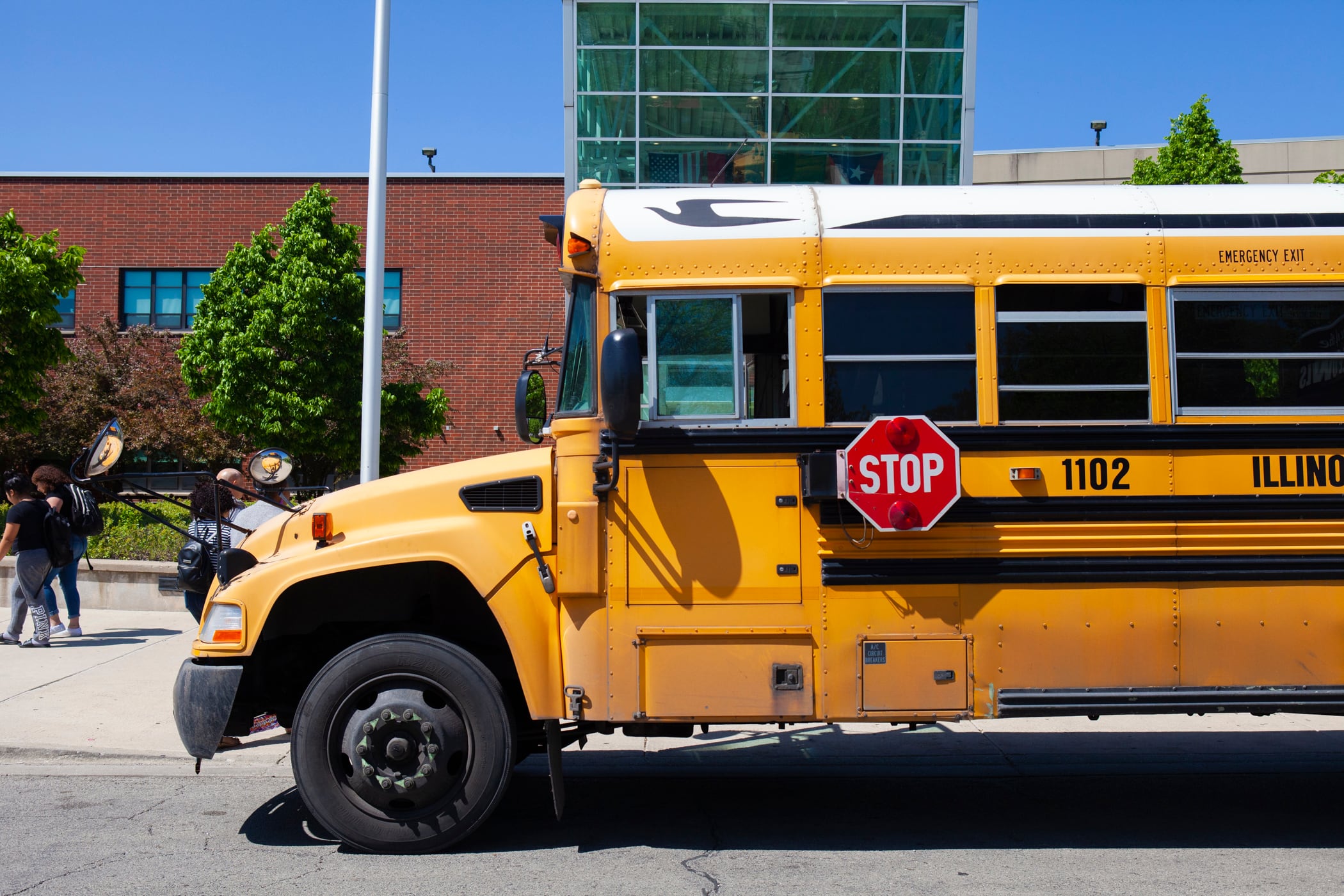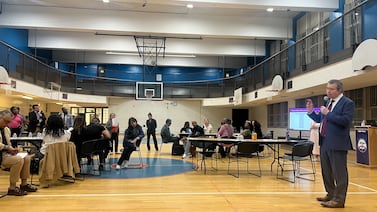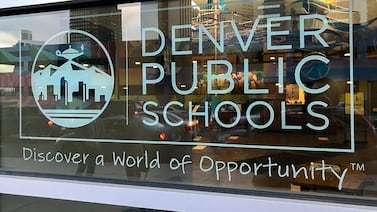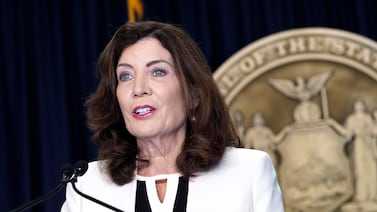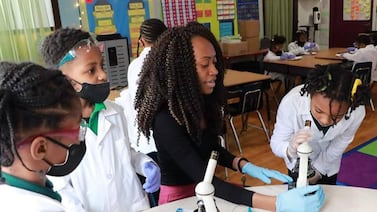As school districts across Illinois weigh whether to offer in-person instruction, remote learning or some combination, district leaders also must figure out how to transport students to school buildings in the fall.
Transportation is among the myriad complex problems facing schools. By federal law, schools are mandated to provide bus service to homeless students and those with special needs. In Illinois, those who live more than one and one-half mile away from their school are supposed to receive free transportation. Bus service is a large cost to school districts, one that could increase as schools deal with large budget cuts due to the coronavirus pandemic. Some school districts, such as Chicago Public Schools, also face a shortage of bus drivers.
One of the major considerations that school leaders have to make is the number of students who can be on the bus at a time. According to the state Board of Education’s fall guidelines, with the state in Phase 4 of Restore Illinois — Gov. J.B. Pritzker’s plan to reopen the state amid the coronavirus pandemic — instead of only 10 individuals on buses, the limit has now increased to 50. Bus capacity varies, but some buses can transport 60 and 70 at a time depending on the age of the children.
To help contain the spread of the virus on buses, the state’s guidance requires that all students wear masks, social distance as much as possible, and undergo symptom and temperature checks before boarding.
Some school districts are planning to have students and parents check their symptoms daily through an online application, but that might not be an option for school districts where internet access is limited. Jan Bush, a business manager at Murphysboro District 186 in southern Illinois, cited this as a reason for why her school district will be doing temperature checks at bus stops during a webinar hosted by the Illinois Association of School Business Officials last week.
“The self certification process probably won’t help us because we are so rural and have some technology issues with our families not having access,” said Bush.
Bush said that if students have a fever before boarding, they will put students in a quarantine section on the bus, recheck them at school and if they still have a fever they will call parents to pick them up.
The state’s guidance recommends that buses have hand sanitizers, gloves, face coverings, tissues, and trash bins, and that they are sanitized daily or between uses.
Edward Brody, assistant superintendent of operations in Forest Park School District 91, in a west suburb of Chicago, says that his district will only provide busing to students who have transportation services specified in their individualized education programs, or IEPs. He also expects all buses to be sanitized at the end of each route.
“At the conclusion of the route when the bus has returned to the district, the driver and the bus aide will sanitize the entire bus front to back. They do that in the morning after they return and then of course, in the afternoon when they return,” he said.
If a school district has a blended model for in-person instruction — in which some students take classes in the morning while others come in the afternoon — it could decrease the number of students on buses at one time but also increase the number of routes needed per day. That is the plan for Glen Ellyn School District 41, a school district in a suburb 24 miles west of Chicago, said Eric DePorter, assistant superintendent of finance and facilities. The district hopes to fit 48 students on one bus at a time, down from about 60 students. But it will create challenges for the district because they outsource bus services.
“We’re going to do a binding survey of our parents that says ‘Hey, if you typically send your child on a bus let us know if you’re going to send your child in the fall.’ That’s going to help us because we’re going to need to restrict those routes, as much as possible to fit within the finite number of buses that our partner can provide. So we’re going to use that data, and hopefully be able to scale down a few routes,” said DePorter.
Another factor that school districts will need to consider is where to drop students off once they reach the school district to ensure that students are not crowding one entrance, said Seth Chapman, assistant superintendent of business services at St. Charles Community School District 303 in Western Illinois.
“I really want us to be aware of what we’re asking our bus drivers to do in terms of arriving at the school,” said Chapman. “Are you planning on having everybody go to one main entrance or having people drop off where there’s going to be multiple buses? We’ve got to be careful with how we instruct our drivers,” said Chapman.


